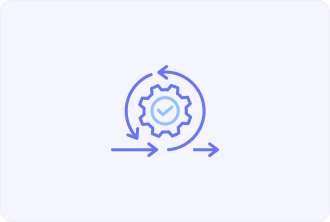Agile Software Development Definition

If flexibility and adaptability to ever-evolving digital world is your manifest, then Agile software development is your bet. In such a high-speed technological age, software development methodologies have to evolve at a pace equivalent to changing requirements of an industry at a high pace.
Agile software development is one such development methodology. On its premise, agile promotes flexible and iterative software development methodologies with a strong emphasis on collaboration, feedbacks of the customers, and releases in small chunks at a high pace. The authors confirm what precisely constitutes software development in an agile manner, its contrast with any other methodologies, and why it aims to become a pillar for new age applications in software development.
Understanding Agile Software Development
Agile software development is a characterization of values and methodologies for enabling groups in flexible and adaptable software development in compliance with the Agile Manifesto, developed in 2001 by seventeen individual IT minds, four values and twelve guiding principles with an emphasis on the people and collaboration, working software, collaboration with the customer, and reaction to change over a rigid plan.
Agile is preferable for workers of your team since within the iterations across a few weeks they can handle the large tasks dividing them into smaller ones, so that the engineers and other crew members can wear sunlight like armor across the most challenging products on your mind.
In a life cycle of a project, direct collaboration between testers, developers, and designers is with a stakeholder. Frequent sessions in a standup and a review in a sprint make everyone in a project current and in a position to react when an issue comes about.
Benefits of Agile Software Development
Obvious advantages of agile software development involve its ease in case of changing requirements. In traditional methodologies, requirements’ change at a high expense and with a lot of time, in case of a change in between a project. With Agile, through its iterative development, such a change can happen at the end of each sprint. Thus, the output will closely resemble what is desired by the client.
Because Agile is iterative, one reaches a point fairly regularly when one can see precisely what one has achieved, and that feels incredibly satisfying and motivating.
Software Development with Agile Methodology
Many exist from short stories about all these variants and manners of application of Agile methodology in computer program development. Surely, Scrum is one of the most popular Agile frameworks. It defines specific roles and events, such as Scrum Master, Product Owner, Sprint Planning, Daily Stand-ups, and Sprint Retro, so that everything runs smoothly in a project. Another Agile framework, Kanban is focused on visualization of workflow and limitation of work in progress.
But not only does it help a team to handle their job in a more efficient way, but it also rises the awareness of the bottlenecks in their processes. It is more flexible than Scrum and is easier to use in most applications that deviate significantly from project management. Extreme Programming is a collective Agile framework that involves inculcating the best industry practices—software development with technical excellence.
These practices at the core of Extreme Programming are pair programming, test-driven development, and integration, which basically aspire to the objective of higher code quality, hence risk reduction toward defects. But whatever framed concrete we may use, the gist of successful agile software development is in never losing focus on delivering customer value.
This means reprioritizing the so-called “product backlog”: features ready to implement and tasks that have yet to be done are maintained in the ordered list through constant refinement. How? The team works on the most valuable parts of the project every time by updating the backlog constantly, based on feedback and changing requirements.
Waterfall vs Agile Software Development Methodologies
Knowing how Agile is not a traditional model such as Waterfall is the only way one can enjoy its full value contribution. Waterfall is a sequential software development model in which each part of a project—of course, therefore, requirement, design, implement, testing, deploy, and maintain—should completely conclude before moving to the next stage.
It is predictable and easy to comprehend but not adaptable in case a change in requirements happens or an issue comes out of nowhere. Probably chief amongst these will be an inclination towards change. Agile is designed with a view towards change and its management, for iterative cycles enable one to implement a change at the end of cycles.
Waterfall, in contrast, perceives change in terms of disruptions that can threaten the whole schedule for a project. Another key variation will be in terms of level of stakeholder engagement. Agile will allow for continuous collaboration with stakeholders during development in a manner that feedback is incorporated at a relatively high rate when developing a product.
Waterfall will have most of its work at both ends of the project execution life, and that tends to misdirect and disappoint at the end because delivered is not necessarily one’s expectation. Agile will have a tendency towards delivering value in a shorter period of time. Breaking down the project into smaller, less complex chunks creates deliverable chunks of software with an opportunity to go out early in an effort to deliver value to the customer immediately.
Waterfall, with its sequential model, will have a much larger period of time before any part of software is delivered. While Waterfall will apply in cases with well-established requirements and with minimum opportunity for change, Agile will apply in cases with a complex nature and requirements will most likely change.
Having a realization of the contrast and a realization of how to make use of the efficiency of Agile will, in fact, allow a business to develop its capabilities in that direction and deliver even wiser products with a save in useful time.